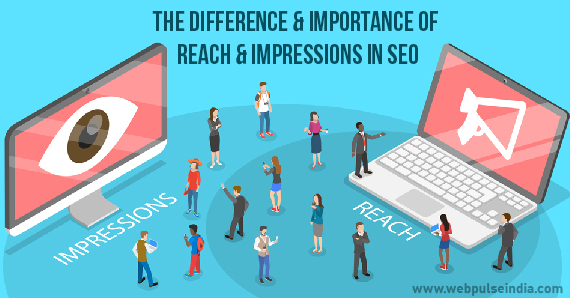
If you want my team to just do your marketing for you, click here.
THE DIFFERENCE AND IMPORTANCE OF REACH AND IMPRESSIONS

There are a variety of engagement indicators to consider when trying to boost your online presence. Reach and impressions are two common measures, especially on social media. However, many people are confused by the distinction between reach and impressions.
There are a variety of engagement indicators to consider when trying to boost your online presence. Reach and impressions are two common measures, especially on social media. However, many people are confused by the distinction between reach and impressions. Learn the definitions of these terms and how to apply them to your social media activities.
What's the Difference Between Impressions and Reach?
Examine their distinct definitions to better comprehend the difference between reach and impressions. The fundamental distinction between reach and impressions is that reach counts only unique users, whereas impressions can include the same user multiple times. To gain a better understanding, learn their definitions.
Definition of Reach: According to the best SEO Company in India, reach is defined as "the total number of individuals who have viewed your ad or content." This is the total number of people who have seen your material.
Definition of Impressions: "The number of times a piece of content was presented to the target audience," according to the definition. Because the same visitors may see your material several times, impressions are often higher than reach. Even if a user does not click or engage with your material, it qualifies as an impression if it is exposed to them by social media algorithms.
Reach and Impressions on Social Media:
The distinction between reach and impressions is that impressions count the total number of times an ad or piece of content is displayed, but reach is concerned with the number of unique users that see it.
These engagement metrics are commonly used on social media to determine how many people have seen your posts or adverts. However, different social media networks track to reach and impressions in different ways.
Reach and impressions are defined by Facebook as "the number of individuals who viewed your ads at least once" and "the number of times your adverts were on screen." They divide reach and impressions into organic, sponsored, and viral categories. They also track engagements, which include likes, retweets, responses, clicks on a link, and expand on your message.
Which Should You Keep an Eye On?
You may be asking which is more useful to track now that you know the difference between impressions and reach. The solution is contingent on your objectives.
The number of times your ad or content has been served is known as impressions. This indicates if it is visible to users. If you're getting too few impressions, it's possible that your ad targeting is too narrow, and you'll need to tweak it. Too many impressions could indicate that your ad is being delivered too frequently, potentially spamming users.
Reach is a valuable metric for determining how many people saw your article. This might assist you in determining which content kinds reach a wider audience and perform better. If you've achieved 1000 users but no one has clicked through to buy your products or read your blog article, you might want to reconsider your targeting and the material you're using.
Both are simple to track, so keep an eye on both to get a complete view of your social media visibility. You can learn how many people saw your material and how many times it was displayed by looking at both reach and impressions. If you have 1000 impressions but only 200 users, something is amiss with your ad targeting because the same users have seen the same ad 5 times.
Conclusion: To get a better picture of how your social media posts and ads are performing, use reach and impressions. These indicators can help you demonstrate your online exposure, which is critical for growing brand awareness. To completely appreciate the efficiency of your online activities, track these along with other metrics like engagement and conversions.


























